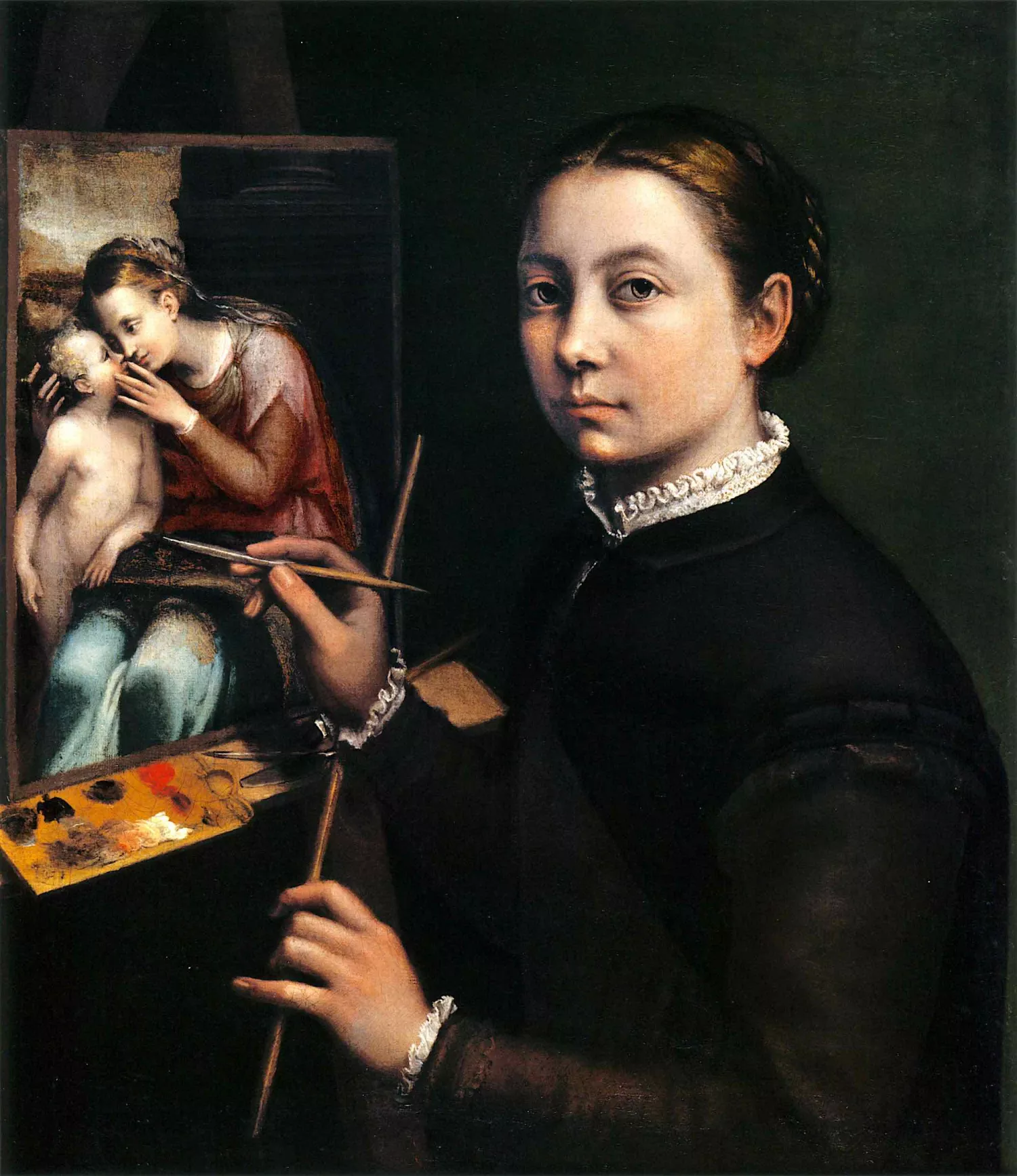Reseña
Sofonisba Anguissola was a successful woman from the world who lived in different countries, not only as a companion of her husbands. She stood out in painting, becoming famous at just 25 years old, and she has gone down in history for her portraits and self-portraits. Her fame has been made invisible despite the recognition of the rest of the artists of the time and some of her paintings have been attributed to renowned male painters, such as the portrait of Queen Anne of Austria, attributed to Alonso Sánchez Coello. After her death, history erased her traces, as happens with so many women artists. However, Van Dyck's portrait of her will endure over time.
Actividades
-
Pintoras en el Renacimiento
[es]
- España > Geografía e Historia > 2º ESO > Sociedades y territorios. Geografía. Historia. Historia del arte
- España > Geografía e Historia > 1º ESO > Sociedades y territorios. Geografía. Historia. Historia del arte
Justificaciones
- Italian Renaissance painter.
- Chamber painter in the Spanish court of Philip II.
- The first female painter whose paintings are exhibited in the Prado Museum.
- She became one of the best portraitists of the time.
Biografía
Sofonisba Anguissola was born in Cremona (Italy) around 1535, into a family of the Genoese nobility. Her father, Amilcare, and her mother, Bianca, had five other daughters and one son. From a young age she began to develop her artistic abilities, standing out in drawing and painting.
At fourteen, she was sent to study with the painter Bernardino Campi and later with Bernardino Gatti. In 1554 she traveled to Rome, where she met and earned the respect of Michelangelo, who shared knowledge and techniques with her, greatly appreciating Sofonisba's talent for painting.
Around 1558, Sofonisba traveled to Milan, where, preceded by her fame, she had the opportunity to meet and portray Fernando Álvarez de Toledo y Pimentel, 3rd Duke of Alba, who was impressed by her talent and personally recommended her to King Philip II. The following year, the monarch invited her to the court of Spain. She struck up a deep friendship with the young Queen Elizabeth of Valois, the third wife of Philip II, and she became her lady-in-waiting. She later befriended Anna of Austria, the fourth wife of the monarch, portraying both of them and many other relevant relatives and courtiers.
In 1571 she married Don Francisco de Moncada, receiving a dowry from Philip II, although she was widowed only eight years later. Back in Italy, Sofonisba married again and continued her brilliant career as a painter, inspiring and guiding many young painters who came to visit her.
In 1625 she died in Palermo at the age of 93.
Obras
Portrait of the artist's sisters playing chess (1555)
Self-portrait (1556)
Portrait of the artist’s family (1558)
Portrait of Philip II (1570)
Bibliografía
Bernis Madrazo, Carmen (1990). La moda en la España de Felipe II a través del retrato de corte. Madrid: Museo del Prado.
Fábrica de la memoria, 15/03/2022, <http://fabricadelamemoria.com/mujeres-en-la-historia/pintoras/264-una-pintora-en-la-corte-de-felipe-ii-sofonisba-anguissola>
Museo del Prado, 15/03/2022, <https://www.museodelprado.es>
La mujer y el arte, 15/03/2022, <https://lamujeryelarte.wordpress.com/sofonisba-anguissola-1532-1625/>
Más de arte, 15/03/2022, <https://masdearte.com/especiales/sofonisba-anguissola-el-naturalismo-innovador-2/>
Wikipedia, 15/03/2022, <https://es.wikipedia.org/wiki/Sofonisba_Anguissola>
Museo del Prado, Sofonisba Anguissola. Una mirada femenina en la corte, 15/03/2022, https://www.museodelprado.es/actualidad/multimedia/sofonisba-anguissola-una-mirada-femenina-en-la/140a40ed-5f45-4764-b653-0110b848a5f3
Museo del Prado, Lecture by Alicia García-Andrés about the painting Isabel de Valois sosteniendo un retrato de Felipe II of Sofonisba Anguissola.
Enfoque Didáctico
This content must be placed in the subject of geography and history of 2nd of ESO, in the block of the birth of the modern world.
Also in visual and plastic arts of 2nd of ESO and history of art of 2nd of Bachillerato.
It can also be addressed in Art Schools, as well as in Adult Education Schools.
Documentos
